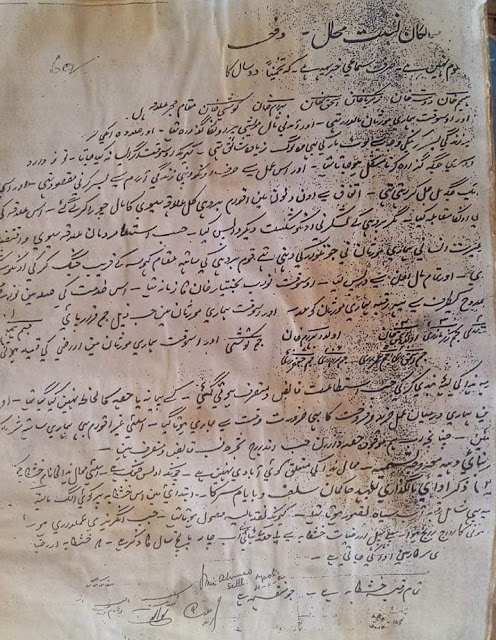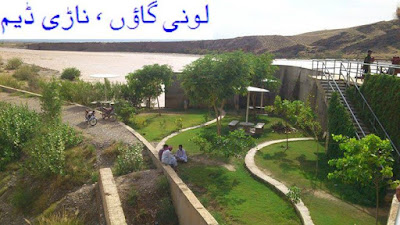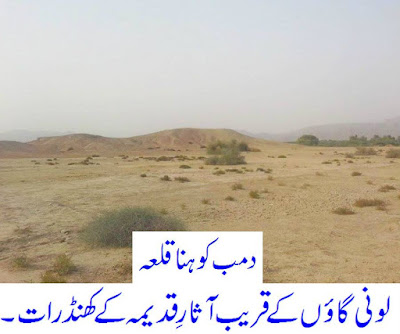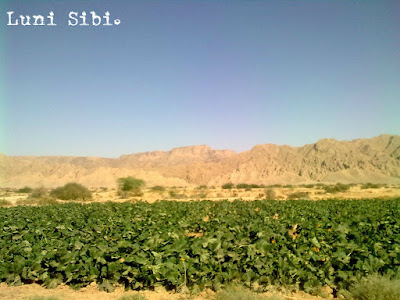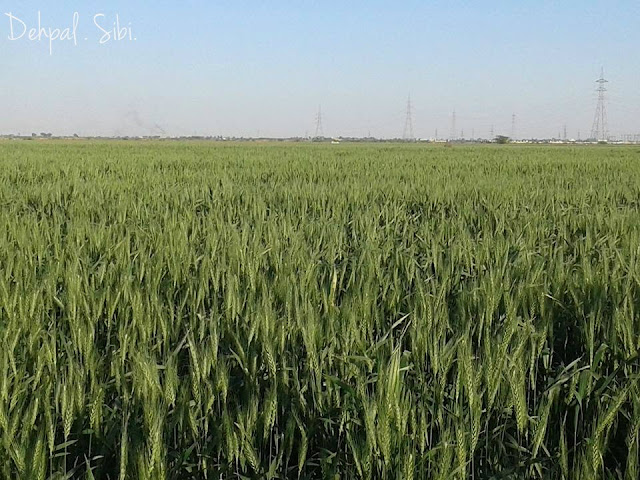تاریخ سبی
سبی
پاکستان کے صوبہ بلوچستان میں ضلع ہے۔ ضلع کی دو تحصیلیں سبی اور ہرنائی
ہیں۔ جو مزید سب تحصیلوں پر منظم ہیں۔ سبی ایک تاریخی شہر ہے۔اس شہرکی بہت
سی خصوصیات ہیں۔ابتدائی تاریخ کےمطابق سبی کا پرانا نام سیوی تھا جوکہ
ہندوریاست کی ملکہ تھیں۔ محمد بن قاسم کی فتح سندھ 711 عیسوی کے بعد راجہ
داہر کوشکست ہوی اور یوں اسلام کی ترویج کا سلسلہ شروع ہوا
 |
| History of Sibi |
سلطان محمود غزنوی نے 978 عیسوی کو سبی اور اس کے قریبی علاقوں کو غزنوی ریاست;میں شامل کیا۔
شجاع الدین ذولنون ارغون
نے 1488 میں شال اور سبی میں حکمرانی کی تھی۔ آئین اکبری کے مطابق سیوی
قلعہ ان کے زیر اثر تھا اور ذوالنون ارغون کے بیٹے شاہ بیگ ارغون نے شال
اور سبی کو بڑی جدوجہد کے بعد جام نظام الدین سے دوبارہ حاصل کیا اور سیوی قلعہ کی 1511 میں دوبارہ تعمیر کی اور مرزاعیسی ترخان کو گورنر مقرر کیا تھا
 |
| Shah Beg Arghun Built Sibi Fort in 1511 |
ارغون حکومت کی کمزوری پر پنی افغان قبائل نے طاقت حاصل کی تھی۔
سید
ابوالفضل نے سبی پر تسلط قائم کرنے کے لیے مہمات روانا کیں پنی قبائل کی
سخت مزاحمت کے بعد سیوی قلعہ پر قبضہ ہوا۔ اور ان کے انخلا کے بعد پنی
قبائل نے دوبارہ ضلع اور قلعہ کا کنٹرول سنبھال لیا ۔ معروف تاریخ دان
میرمعصوم شاہ بخاری کی نگرانی میں 1595 تیسری مہمات کی گیں۔
 |
| Panni Tribes Sibi |
اکبر بادشاہ کے وقت میں سبی اور ملحقہ علاقے مغل سلطنت کا حصہ تھے اور باقاعدگی سے واجبات ادا کرتے تھے
مغل
سلطنت کے بادشاہ اورنگ زیب عالمگیر کے بھائی داراشکواہ نے بغاوت میں
ناکامی پر فرار ہونے کی کوشیش کی اور سبی کے قریب علاقہ ڈھاڈر سے گرفتار
ہوے اور اس وقت جنید خان پنی باروزئی نے ان کی گرفتاری میں اہم کردار ادا کیا تھا ۔ اورنگ زیب عالمگیر نے ان کے بیٹے مرزا خان باروزئی کو 1695 میں نواب کا خطاب دیا اور بالائی سندھ کا منتظم مقرر کیا ۔ اس کے بعد نواب بختیارخان باروزئی کو 1700 میں نظام افواج نے قتل کر دیا۔
 |
| Nawab Mirza Khan Barozai |
سندھ
کے یار محمد کلوڑا نے 1712 میں سبی اور مظافات میں حکمرانی قائم کی لیکن
جلد ہی احمد شاہ درانی کی بڑھتی ہوئی طاقت نے ان کو واپس جانے پر مجبور کر
دیا۔
درانی
سلطنت میں مقامی حکمرانی باروزئی قبائل کو دی گی ۔ احمد شاہ ابدالی نے
محمد خان باروزئی کو سبی کا اور اسماعیل خان باروزئی کو سانگان کا منتظم
مقرر کیا
انگریز اور خجک قبائل کی جنگ 1841
انگریزوں
کی آمد کا سلسلہ شروع ہو اور مارچ 1841 کو سبی کے خجک قبائل نے انگریزوں
کو مالیہ دینے سے انکار کر دیا . کرنل ولسن کی سربراہی میں خجک دیہات پر
حملے کے لیے قافلہ روانا کیا اور اس وقت کے باروزئی سربراہ نے ان کی حمایت
کی تھی۔ خجک قبائل قلعہ میں رہ کر جنگ لڑتے رہےاس جنگ میں انگریزوں کو
بھاری جانی نقصان ہوا
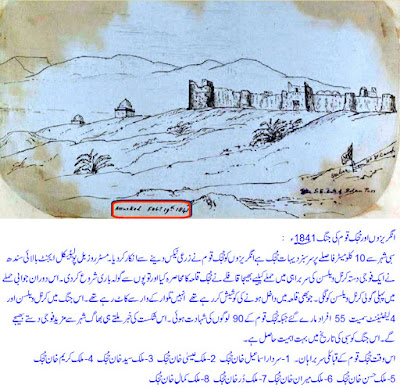 |
| Anglo Khajjak Battle 1841 |
کرنل ویلسن سمیت4 آفیسر اور 55 افراد قتل ہوے اور خجک قوم کے 90 افراد کی شہادت ہوئی
انگریزوں نے باقاٰعدہ ایک پولیٹیکل ایجنٹ سبی مقرر کیا اور عمارات تعمیر کیں اور سبی شہر آباد کیا
سبی میں موسم سرما
میں جرگہ 1875 سے شروع کیا اس میں مختلف کیسوں کے فیصلے مقامی نمائندوں کی
موجودگی میں ہوتے تھے – سبی سب ڈویژن کے شاہی جرگہ کے نمائندے 1.۔خان بہادر
سردار مصطفی خان باروزئی (کڑک)2-سردار تاج محمد باروئی (سانگان) 3۔ خان
بہادر دین محمد مرغزانی(سبی) تھے۔
سبی میلہ کا آغاز فروری 1885 سے ہوا اس میلے کا مقصد جانوروں کی پیداوار میں اضافہ اور اس کو مالداروں کے لیے ایک منڈی بنانا تھا ۔ مالداروں کوانعامات دئیے گے۔ انتطامی رپورٹ آف بلوچستان ایجنیسی 1887-1886میں تفصیلات درج ہیں۔
سبی شہر میں تعلمی ادارے اوراسپتال قائم کیے گے۔ سبی سےہرنائی اور کوئیٹہ کے لیے ریلوے لائن بچھائی گیں ۔
تاریخ کا حوالہ درج ذیل کتابوں سے لیا گیا ہے۔
1۔ایمپیریل گزیٹیر آف انڈیا مصنف سیکریٹری اسٹیٹ آف انڈیا
2۔سبی ڈسٹرکٹ گزیٹیر مصنف میجر میکانگی۔
3- ارغون نامہ مصنف سید میر محمد بن سید جلال تتوی
4- تاریخ معصومی مصنف معصوم شاہ بخاری
5-تھل چوٹیالی رپورٹ مصنف او-ٹی-ڈیوکس
6-افغان آف فرنٹیر پاس مصنف عبدالعزیز لونی
7-تاریخ بلوچستان مصنف گل خان نصیر
8۔ایڈمین اسٹریشن رپورٹس مصنف پولیٹکل ایجنٹس
9۔برٹش ٹروپس آپریشن ان سندھ اینڈ افغانستان


